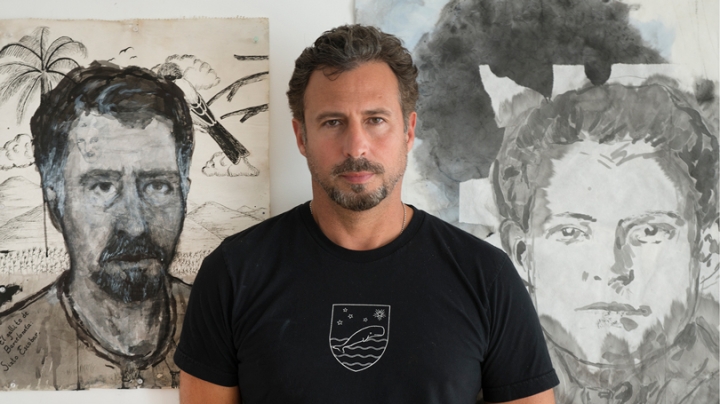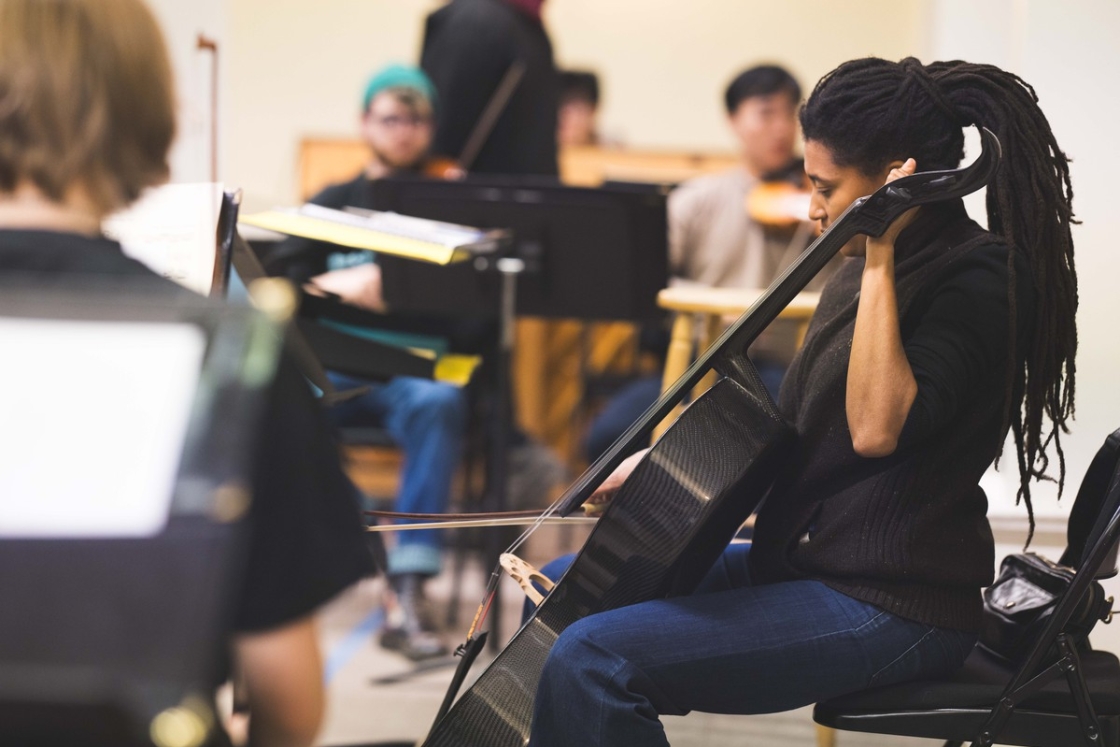“The State of the Artist” is the subject of a public lecture by Roth Distinguished Visiting Scholar Enrique Martínez Celaya on Thursday, Oct. 20, at 4:30 p.m. in 13 Carpenter Hall.
The talk is the second of four that the artist will give during the 2016-2017 academic year, a series Martínez Celaya plans to collect as a book about his work, providing a critique of the contemporary art world and an alternative framework for how artists can think of their role in society.
In addition to these talks, and work on five exhibitions of his art that are going up around the U.S. and Europe this year, Martínez Celaya will spend much of his time at Dartmouth meeting with students and faculty, visiting classes in a variety of disciplines, and working in his studio in the Hopkins Center.
Dartmouth News spoke with Martínez Celaya recently about the connections between art, science, philosophy, and poetry; his third visit to Dartmouth; and why he keeps coming back.
You’ve been a Montgomery Fellow, and now you’re a Roth Visiting Scholar. What is it about Dartmouth?
The community here echoes with aspiration but also with humility, and that’s exciting to me. The notion that a place like Dartmouth exists in a larger social environment that sometimes aims toward mediocrity is amazing—it’s exciting to see people taking the hard path and exploring fields that are difficult. It’s tremendously idealistic. I find the opportunity to be here morally empowering.
Do you have a favorite place on campus?
I love that walk around the golf course down to the woods. And I love to sit on the Green under a tree and read. I like Robert Frost—in fact I’m doing a project for the Hood on Frost’s ethics—and he remarked that Wilson Hall was where he connected with poetry for the first time. So I try to sit on a bench on the Green with a view of Wilson Hall.
Can you talk about the connection between your work and Frost?
I see my practice to be in some ways more connected to poetry than to visual arts. I admired Frost when I was younger, but the poet Joseph Brodsky’s spectacular essay on the poem “Home Burial” reignited my interest in him. I find the apparent simplicity of his poetry—and the profoundly complex, at times dark, bedrock on which it sits—to be in keeping with what I think art is. I’m interested in the construction of identity that Frost created, and the mysterious territory he mined between nature and human. That territory is of interest to me as well.
Your first career was as a physicist. What connects science and art?
In many ways science and art are quite similar: You go through this process of using what you know to take you to the boundary of what you don’t know. With physics you can isolate certain variables, you can think of what is really at play, and you have the wonderful language of mathematics to guide you. Those aspects of physics have affected the way I look at problems in my work. I’m trying to use the rigor I learned in science toward things that resist that rigor. Questions like time, memory, existence, and disillusionment resist any kind of systematic approach, and yet I want to systematically look at them.
Does art contribute to science?
When I was a scientist, some of the work I did as an artist allowed me to think freshly about problems, and every once in a while I got lucky because I was willing to take certain risks. There is inertia in both fields, but certainly in science, against doing something stupid, because there is a big body of knowledge to contend with and a tendency to make sure that you know where you’re walking before you take a step. Sometimes coming from a field like art allows you to make jumps that sometimes, not always, are rewarded with a discovery.
What’s the aim of the lecture series you’re giving this year?
The talks are an attempt to explain the ethics and aesthetics of my work in a more comprehensive way than I have tried to before. The first lecture, “The Studio Is Not a Factory,” was an introduction. And the lecture on Oct. 20, “The State of the Artist,” will look at the condition of the art world and how a vicious cycle of economic conditions and cynical positions create a particular role for the artist that academia and the gallery system perpetuate. In the spring, I’m going to offer a counterpoint to that view of the artist, and show how an artist can have a larger role in society. It’s really a reconsideration of the modern project as a whole, which has limited the artist to a very particular role.
How does your own success in the art world affect your critique?
When I was younger I thought things would seem better when I got to know more of the art world. Now I have a more informed view; I know many of the players, and while there are wonderful people in the art world, there are some systemic problems in the way art is seen, consumed, taught. I feel fortunate to be in a position to speak with some knowledge that I didn’t have 20 years ago. That’s one advantage of having had some success in the system. On the other hand, I have to be careful to not find myself in a hypocritical position. I try to be honest about the contradictions and about the challenges, and I make choices that support what I respect—for instance, the decision to come Dartmouth because I believe in teaching and in the institution. So when I talk about the challenges the art world presents to artists, I’m talking from the point of view of somebody who is grappling with these challenges and with the questions they raise.

